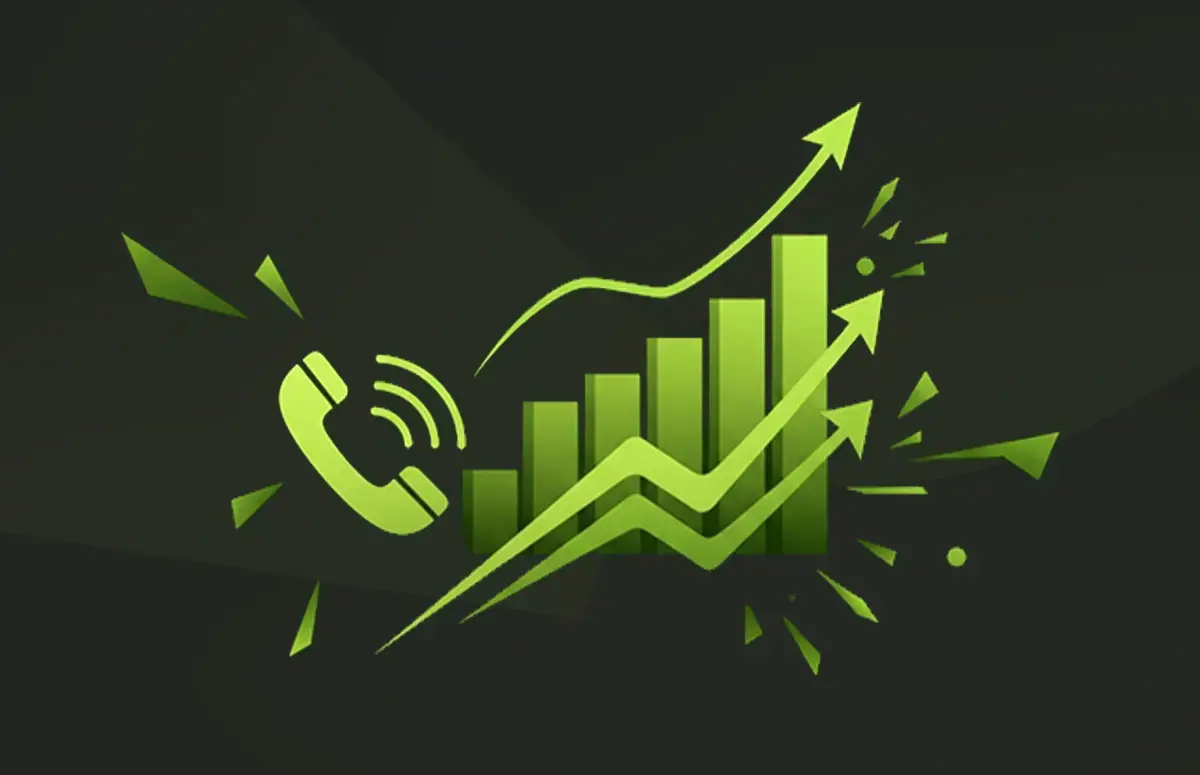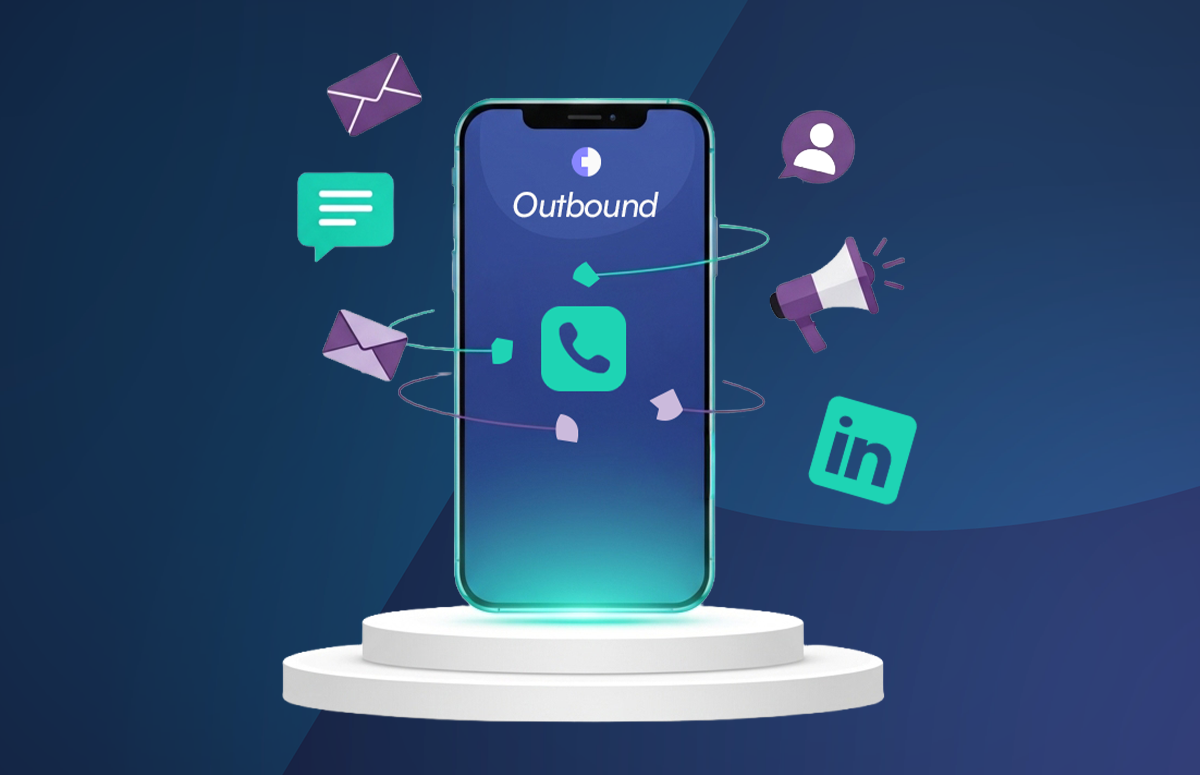Is Cold Calling Dead? 7 Data-Backed Reasons Why It’s Not
7 reasons why cold calling isn't dead:
Let’s address the elephant in the (sales) room:
Is cold calling finally dead in 2025?
Short answer: absolutely not.
But it has evolved - and if you’re still using old-school tactics, you’re probably not seeing results.
According to Cognism’s latest State of Cold Calling report, reps who embrace a smarter, data-driven, and relationship-first approach are thriving on the phones.
Here are 7 statistically-backed reasons why cold calling is far from dead.
1. It still books meetings, especially for the best teams
While the average industry success rate for cold calls is down to ~2%, Cognism reports a 6.7% success rate.
That’s triple the average, and proof that cold calling still works when backed by:
- High-quality data.
- Tight ICP targeting.
- Personalised messaging.
It’s not the channel that’s broken. It’s the way most people use it.
2. Cold calls are getting longer and more engaging
In Cognism’s 2024 Cold Calling Report, the average cold call lasted 83 seconds.
In 2025, that’s increased to 93 seconds.
That 10-second boost signals something big:
Prospects are more engaged than ever.
If your cold call opener is sharp and relevant, they’re more likely to stay on the line and hear you out.
3. Most conversations happen within 3 calls
Your sales reps don’t need to dial endlessly.
The data says:
- 93% of conversations happen within 3 calls.
- Calling up to 5 times nets 98.6% of total conversations.
- After that? Diminishing returns.
Sales calling today is about precision, not persistence.
4. Timing still matters
Cognism’s 2025 data confirms:
- Tuesdays are best for booking meetings.
- Fridays are best for conversations (there’s less competition).
- Best time to call? 10-11am (followed by 2-3pm)
Timing might not make your sales pitch, but it sure helps you get heard.
5. Mobile numbers quadruple pickup rates
If you’re not calling direct dial mobile numbers, you’re missing out.
Reps using mobile numbers see 4-10x higher pickup rates.
But there’s a catch:
You must call with intent, relevance, and respect - that means no spam!
High-quality data + a permission-based mindset = more shots on goal and better results.
6. It’s not about pitching, it’s about people
The top-performing reps aren’t selling. They’re solving.
In 2025, Cognism shifted from high-volume outreach to:
- Personalised messaging.
- Quality-based incentives.
- Deeper engagement across power lines.
And it paid off:
Our cold call success rate rose, even as the market got tougher. Because cold calling now fuels demand generation, not just pipeline.
7. Localisation is the key to success
Cognism found that using UK reps to cold call into Europe dropped success rates.
Why? Because of the following:
- Cultural mismatches.
- Language barriers.
- Prospects being suspicious of foreign numbers.
The fix?
Localised teams and tailored messaging.
Cold calling works globally - if you speak the local language (literally and figuratively).
The verdict
Cold calling isn’t dead. Bad cold calling is!
In 2025, the winners are those who:
- Use accurate, timely data.
- Call with a purpose.
- Focus on relevance over volume.
- Build relationships, not just book demos.
Cold calling is no longer a brute-force, interruption tactic.
It’s a surgical, strategic channel that still delivers when done right.
6 steps to bring your cold calling back to life
If your B2B cold calling results have flatlined, don’t fret! You won’t have to bury your phone just yet.
Here’s how top-performing sales teams, including Cognism’s, are breathing life back into the channel in 2025:
1. Tighten your ICP
Calling anyone with a job title is dead.
Calling the right person at the right company with the right pain is alive and well.
Define your ideal customer based on:
- Revenue potential.
- Time-to-value.
- Lifetime value.
- Ease of implementing your solution.
Only call those you can actually help.
“Your ICP is your north star in outbound sales.” - Catherine Olivier, VP of Sales Development at Cognism
2. Incentivise quality, not quantity
Reps shouldn’t be rewarded just for booking meetings.
Cognism’s sales managers align incentives to meetings that convert and conversations that matter.
Here’s how to do it:
- Focus on meetings attended.
- Reward reps when prospects become customers.
- Encourage long-term thinking, not just short-term hustle.
3. Prioritise strategic multithreading
A call to one contact = a gamble.
A call to three relevant stakeholders = a playbook.
Deals with 10+ stakeholders involved have a 30% higher chance of closing at Cognism.
Our advice:
Adopt a multithreading approach to sales. Map out power lines, get buy-in across functions, and prospect to multiple decision-makers at once.
4. Equip reps with mobile numbers
For sales leaders, this one’s non-negotiable!
Cognism found that calling verified mobile numbers:
- Boosts pickup rates by 4-10x.
- Saves reps from wasting time on gatekeepers.
- Builds confidence and momentum.
Mobile-first data = more calls that connect = more conversations.
5. Master timing by region
We already identified 10-11am as a prime time.
But it only works if you’re calling in the right time zone.
Cognism learned the hard way:
Cold calling into new markets with UK reps doesn’t work. Instead:
- Use localised teams.
- Dial from local numbers.
- Adapt your cold call script to local expectations.
“Every region needs a different strategy.” - Jack Frimston, Director at WHAM
6. Think beyond the demo - create demand!
Not every call needs to end with a meeting.
Sometimes, the best move is a callback or a value drop that sparks curiosity.
Shift your mindset from:
❌ “Can I book you in?”
To:
✅ “Can I help you when the time is right?”
Reps should leave every call with:
- A connection made.
- A curiosity sparked.
- A follow-up path established.
Key takeaway
Cold calling is no longer a numbers game.
It’s a relevance game.
If you’re calling the right person, with the right message, at the right time, your prospects will answer.
How Cognism brings cold calling back to life
Tired of cold calls that go nowhere?
Cognism helps you ditch the guesswork and dial with purpose.
With the most accurate B2B data on the market - including verified mobile numbers, firmographics, intent signals, and real-time buying triggers - Cognism ensures every call is high-intent, hyper-personalised, and perfectly timed.
We don’t just help you make calls.
We help you start conversations that convert:
- Reach your ideal buyers with a tighter ICP.
- Connect faster with phone-verified mobile numbers.
- Call at the right time with intent and technographic insights.
- Build pipeline through value-led conversations, not spray-and-pray.
Cold calling isn’t dead. It’s just been waiting for better data.
Cognism is how you bring it back to life.
Contact us today and start turning dials into deals 👇
/Cold%20calling%20strategy/cold-calling-strategy-card.webp)

